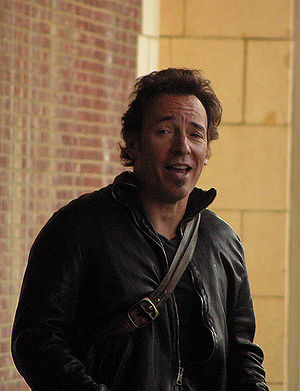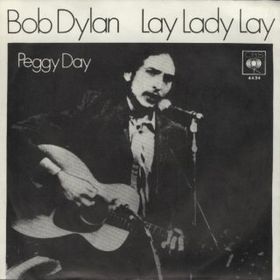The Funk Brothers - Forgotten Yesterday, Feted Today, Remembered Forever by An-Dinh Nguyen
"Who?" may be the most painful remark an accomplished artist can hear. The Funk Brothers, the Motown studio band whose dazzling, recognizable rhythms and riffs frenzied millions of fans before a single note was sung, heard that refrain for 40 years.
I was one of those unknowing fans. As much as I love listening to Martha and the Vandellas or the Tempts, as much as the tales of Tammi Terrell and Paul Williams sadden me, it was the Funk Brothers story that inspired me most.
Before Motown's unbelievable success left them behind, they were happy just playing music.
In the 1950s, Detroit clubs spilled over with talent. Some performers swung with a polished jazz beat. Some had more countrified R&B and blues backgrounds. Many excelled in both styles. But just a few interested Mickey Stevenson, the Artists and Repertoire director hunting for musicians to bring back to Hitsville.
In 1959, the Motown studio band took its first form. Bluesy pianist Joe Hunter (not singer-songwriter Ivory Joe Hunter) led the group. Big band drummer William "Benny" Benjamin and adventurous bassist James Jamerson also signed up. That pair alone would seismically influence the music scene, not to mention the Motown Sound.
The Funk Brothers' other key members soon arrived. Guitarist Eddie Willis, with his southern-fried rhythms. His comrade Joe Messina of the atomic-clock timing. Their cohort Robert White, the dependably melodic strummer.
Those three weren't the only ones who ended up with partners. Richard "Pistol" Allen had the skill to twirl his drumsticks in place of - or alongside - Benjamin.
In the keyboard corner, Johnny Griffith plied his craft with jazzy pizzazz. While Griffith tickled the ivories, Earl Van Dyke slammed them - with love, of course.
Less traditional touches enriched the Motown Sound, too. Eddie "Bongo" Brown added exoticism with instruments like - can you guess? - bongos, congas, and gourds. Jack Ashford could create new occupation names from his résumé: vibraphonist, tambourine player, wood blockist, plywood smacker, can tapper, hand clapper, etc.
The Funk family hadn't all congregated by 1962. But among the brass, reed, string, and additional rhythm players who crammed into Studio A, the first 11 of 13 Brothers were making their marks on keyboards, drums, bass, guitars, and percussion (almost literally in Van Dyke's case!).
When Hunter left Motown in 1963, Van Dyke became bandleader. Meanwhile, the drum section would rock even harder with Uriel Jones joining the group.
From that converted basement nicknamed the Snake Pit, the Motown Sound continued to erupt.
A song often began as just a general arrangement from composers. Various Funk Brothers, like the guitar trio or the drums-bass team, would huddle together. The musicians would bandy about ideas for fills and rhythms and how those specific textures would interact.
Once the recording gear and singers were ready, the band would play. Together. In one live take.
This was necessary at least initially because, with only three recording tracks, studio engineers couldn't overdub individual parts. So unless Berry Gordy loved a mistake for its spontaneity, it meant a do-over for everyone.
But apparently, "mistakes" and "Funk Brothers" rarely went together.
Other times, at Motown's behest, they would improvise some rhythms, set them to a track, and wait for composers to write a song from that!
In many ways, this band was the Motown hit machine.
Yet its sound was anything but mechanical. The drummers shuffled, swung, or machine-gunned the music forward, ever forward. Jamerson ran circles and zigzags around conventional bass lines. The guitarists' licks wound around each other while their hefty backbeats propped up their Brothers.
On acoustic or electric piano, organ, and harpsichord, the keyboardists sauntered, glided, and thunked along effortlessly. Then there was the mellow rush of Brown's bongos and Ashford's imaginative, remarkably prominent percussion.
When you heard all that plus several players on the same instrument or different instruments on the same lines, you knew that that was the Motown Sound.
The company wanted it available 24/7. In its prime from 1963 to 1967, the musicians had to record on demand. No matter that they weren't always conscious when the calls came! Jamerson and Benjamin were especially valuable.
Moreover, Motown was incredibly protective of its Sound. Exclusive contracts prevented the musicians from working at other labels - in print. Though they were earning a lot late that decade, their pay was still low by union standards. Companies like Ric-Tic and songwriters like Burt Bacharach and Hal Davis welcomed Motown band members in secret.
The Funk Brothers managed to escape not just the studio. Tours with Jackie Wilson and recordings in Chicago and as far south as Atlanta took them out of state.
Still, Detroit provided their most comfortable gigs. Sessions at the Chit Chat Club, the Twenty Grand, and Phelps' Lounge returned them to their jazz and R&B roots.
Back at Motown, Norman Whitfield's "psychedelic soul" pulled them into the pop future. Newer technology made their music more sumptuous and overwhelming. Guitarists Dennis Coffey and Melvin "Wah Wah Watson" Ragin added spacey spice to the mix.
Fans ate it up. And loved the singers for it.
At least British listeners knew the studio band. As did musicians who admired Jamerson's innovations. And, naturally, British musicians, like the Rolling Stones and the Beatles.
Even at its peak, Motown continued to exclude the musicians' names from records. Between that, the underwhelming wages, and the stricter musical arrangements, the Funk Brothers were not pleased.
Then came a much worse blow. After years of alcohol and heroin abuse, Benny Benjamin's body gave out in 1968. He was only in his 30s.
Meanwhile, his dear friend Jamerson had been battling mental and physical demons that made him flakier than before. So drummer Uriel Jones was not the only one who had to replace a legend by the decade's end. In 1967, Bob Babbitt had become the 13th Funk Brother and capable second bassist.
The updated lineup kept plugging away. Motown finally listed musician names in Marvin Gaye's What's Going On in 1971.
Fame at last? Not quite. The next year, with little notice, Motown Records moved to Los Angeles. Again, the Funk Brothers got left behind.
The members eventually scattered across clubs in Detroit or sessions in L.A. And that was basically that.
Fast forward to 1983. To the anniversary event Motown 25: Yesterday, Today, Forever. To its musings on the Motown Sound and praise for the singers, songwriters, and Berry Gordy. To the TV viewers who enjoyed the special and returned to their lives without hearing one word about the musicians.
Months after attending the show and watching Motown ignore him more blatantly than ever, James Jamerson, 45, died from a combination of pneumonia and cirrhosis of the liver.
Eddie Brown passed later that same year.
How many more Funk Brothers would never get their due in life?
Guitarist Allan Slutsky spearheaded the 2002 documentary, Standing in the Shadows of Motown. That ode to the Funk Brothers, and the James Jamerson book that formed its basis, took over 16 years to fund and release.
It came too late for Earl Van Dyke and Robert White, who'd died in 1992 and 1994.
Pistol Allen got far enough to appear in and view the finished film before succumbing to cancer in 2002.
Johnny Griffith basked in the publicity blitz before his sudden passing that November, days after the world premiere.
Fortunately, their fame has spread beyond one movie. From Motown 40 and Rock's Hall of Fame (which inducted Jamerson and Benjamin) to Grammy-dom and shows that they headline on tour, the band members are finally receiving industry and fan appreciation.
Joe Hunter and Uriel Jones were two of those lucky musicians up until their deaths on February 2, 2007 and March 24, 2009, respectively. So went the last of the Brothers' keyboardists and drummers.
Hopefully, in another generation, those who think of Motown will automatically remember the Funk Brothers for the music luminaries they were.
© 2004-2009 SoullyOldies.com. All rights reserved.
Please include copyright when reproducing this article.
An-Dinh Nguyen celebrates classic Motown artists with biographies, discographies, and reviews at Soully Oldies. See http://www.soullyoldies.com/funk-brothers.html for her original Funk Brothers profile.
Article Source: http://EzineArticles.com/?expert=An-Dinh_Nguyen
http://EzineArticles.com/?The-Funk-Brothers---Forgotten-Yesterday,-Feted-Today,-Remembered-Forever&id=2513305
http://psychedelichippiefashion.blogspot.com/
http://thezeitgeistischanging.blogspot.com/
http://www.soul-flower.com/Merchant2/merchant.mvc?Screen=SFNT&Store_Code=SOS&AFFIL=Robert_Muller
![Reblog this post [with Zemanta]](http://img.zemanta.com/reblog_e.png?x-id=d7a032f0-2b99-4774-aa3a-b3e5fdccb041)


![Reblog this post [with Zemanta]](http://img.zemanta.com/reblog_e.png?x-id=e14c8317-4fa7-49d9-bfaf-575cf2f6ce69)
![Reblog this post [with Zemanta]](http://img.zemanta.com/reblog_e.png?x-id=16c47fe9-a296-4fea-b531-2ef1ebc1627e)










